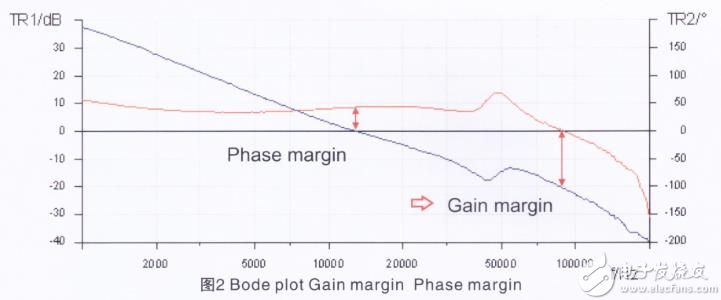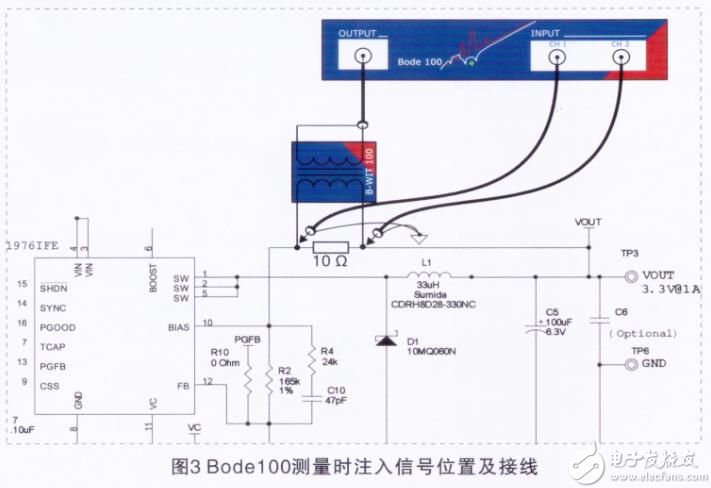With the continuous development of depth and breadth of technologies such as electronics, self-control, aerospace, communications, medical devices, etc., it is inevitable that the power supply for the power supply should have higher stability, that is, not only good linear adjustment rate, but also load regulation rate. Have a fast dynamic load response. These factors are related to the control loop. The control loop generally works in the load state and is called voltage negative feedback. If the feedback control loop is not used in the converter (part H in Figure 1), its transfer function is generally C/R=G, where G is the product of the input filter, power conversion, rectification and filtering components, etc. The form of the union, so in this paper is expressed by the total product factor G), it can be seen that the output changes linearly with the change of the input, but due to the nonlinearity of the rectification and filtering network over the entire time domain, in fact, this change should It is approximately linear, so when the input power is changed, it does not work well to the voltage regulator. If the design of the feedback loop is not good, the loop cannot be adjusted in time according to the transient change of the load, then the output power will be high or low in an instant, and may even cause the power system to oscillate. The first level constitutes damage. At this point, it is important to be able to measure the loop. So how does the loop part affect the entire loop?
Referring to the DELTA AC-DC series, the loop gain model of the op amp in the feedback loop control section shown in the figure below has a transfer function of C/R=G/(1+GH), where G: open loop gain. H: Feedback coefficient. GH: loop gain (can be derived from Figure 1)

First, the standard of loop gain stability
By the transfer function C/R=G/(1+GH), the open-loop gain G of the amplifier is a function of frequency, which decreases with increasing frequency and also with the phase of the amplifier. When GH=-1, Then the value of the transmission is ∞, that is, the gain is infinite. It can be considered that any small input disturbance can cause the infinity of the output. If the signal with infinite output is fed back to the power conversion, it will inevitably cause the oscillation of the final output. The entire system is therefore not regulated. Therefore, the stability of the system can be judged by analyzing the gain and phase of GH.
And because it is oscillating when GH = -1, there is a phase shift ∠GH is 180 ° (because the negative feedback itself has a phase shift of 180 °), the loop gain | GH | = 1 (0 dB). So to make it Stabilization needs to meet the following conditions:
1. The phase condition is to have a phase shift of less than 180°, that is, a margin of more than 45°, and the gain condition generally requires a margin of -12 dB or more.
2. The crossing frequency is closed at 20dB/Dec. Related explanations are described below.
Second, the Bode diagram foundation
We can judge the stability of the system by the frequency characteristic of the loop gain GH, and the loop gain |GH| and the frequency characteristics of the loop phase difference ∠GH can be expressed by the Bode diagram (Fig. 2), and the stability of the system can pass Bode The phase margin in the figure, the gain margin, and the crossover frequency. among them
Phase margin refers to the phase corresponding to the gain down to 0 dB, expressed in degrees (deg) (Figure 2).
Gain margin refers to the amount of gain corresponding to a phase of 0, expressed in decibels (dB) (Figure 2).
The crossover frequency is the frequency point at which the gain curve crosses 0 dB (Figure 2).

The role of the phase margin is to ensure that the system is stable under certain conditions (including component error, input voltage variation, load change, temperature rise, etc.), and it must be used at a nominal input load rated room temperature of 45 degrees. the amount. If the input power, load, and temperature range is very large, the phase margin should not be less than 30 degrees. In order to not approach the unstable point, the gain margin is generally considered to be -12 dB or more.
The size of the crossover frequency band width can reflect the speed of the control loop response. It is generally believed that the wider the width, the better the ability to suppress the dynamic response of the load. The overshoot, the smaller the undershoot, the faster the recovery time, and the system can be more stable. However, due to the influence of the zero point of the right half plane and the limitation of the bandwidth of raw materials and op amps, the bandwidth of the power supply cannot be increased without limitation. Generally, the switching frequency is 1/20~1/6.
Third, the loop test
For the measurement of the gain and phase of the loop, we can usually measure with a loop analyzer (FRA) or a gain-phase analyzer. These instruments pre-process the analog signals obtained by sampling, and then use A/D conversion to obtain the gain and phase by DFT (Discrete Fourier Transform) operation, and finally express them by Bode plot.
This article will use OMICRONI-LAB's loop analyzer (Bode100 national test electronics) for analysis, mainly in accordance with the connection diagram below, in particular, the location and size of the injection resistor, in order to reduce measurement error, The experiment generally selects a 10~100Ω resistor. The size of the disturbance signal can be read by the oscilloscope during the test. It can also be set by the FRAM Amplitude compression function, but the amplitude of the disturbance cannot exceed the voltage. 5%, otherwise the measured result is not accurate.

Fourth, switching power supply stability test case:
After understanding the factors and criteria that affect product stability and how to test the product, the product results can be analyzed. The following is an experiment with a product of the DELAT wide-pressure series. See the actual grounding section (Figure 3) and the test results (Figure 4). Gain (can be derived from Figure 1).

In this case, it can be seen from the above figure that the gain margin is -9.449dB, the phase margin is 83deg, and the bandwidth is 20.49KHz, but the 83deg phase margin is dynamically under-damped, in fact, it can pass the error amplifier. The compensation network is achieved by rolling off at a slightly lower frequency. Under the premise of ensuring the phase margin, the gain below 0dB can be attenuated by -40dB/decade, which is more conducive to suppressing high frequency interference, which achieves the best response.
The frequency corresponding to the 0dB intersection is 20.49KHz. If a higher bandwidth is required, a smaller output filter capacitor can be used to generate a smaller ripple voltage, which also reduces the use of raw materials and the volume of the module power supply, thereby enabling the module power supply. Become more energy efficient. Considering the very conservative gain and phase margin, of course, some minor changes can be made to the compensation link of the error amplifier, and the bandwidth can be reasonably increased to make the system achieve faster response and improve stability.
In addition, during the test, the loop gain and phase of the switching power supply are usually recommended to be tested separately under no-load, half-load and full-load conditions. As for the choice of the power level of the excitation signal, it is generally required to set the power of the injected AC excitation signal to be higher when the measurement frequency is relatively low, for example, -20 dBm or -30 dBm. Capacitor ESR testing during loop testing is also very important, and OMICRON-LAB's loop analyzer Bode100 is up to 40MHz, which greatly facilitates the measurement of passive device frequency characteristics.
V. Summary:
From the perspective of the feedback loop gain phase, how to measure the stability of the switching power supply, the standard of stability, the understanding of the Bode diagram, the use of FRA including the link diagram, the measurement of the loop characteristics, and the simple analysis of the experimental results, finally Suggestions for improvement. Of course, the stability of the system can also be qualitatively analyzed by the time domain method, but the loop analyzer can be quantitatively determined in the frequency domain to make a more intuitive judgment of the performance of the system. Especially in the case of fierce competition in the industry and very short customer delivery, it is extremely important to perform frequency domain document analysis on the power supply. In measuring the frequency response of the switching power supply negative feedback loop, it is recommended to use a dedicated loop analyzer or vector network analyzer such as Bode100, E5016B.
Street Light Post,Solar Street Lights With Pole,Solar Street Lamp Post,Solar Powered Street Lamp Post
NANTONG RONGCHANG IMPORT&EXPORT CO.,LTD , https://www.ergsolarcn.com